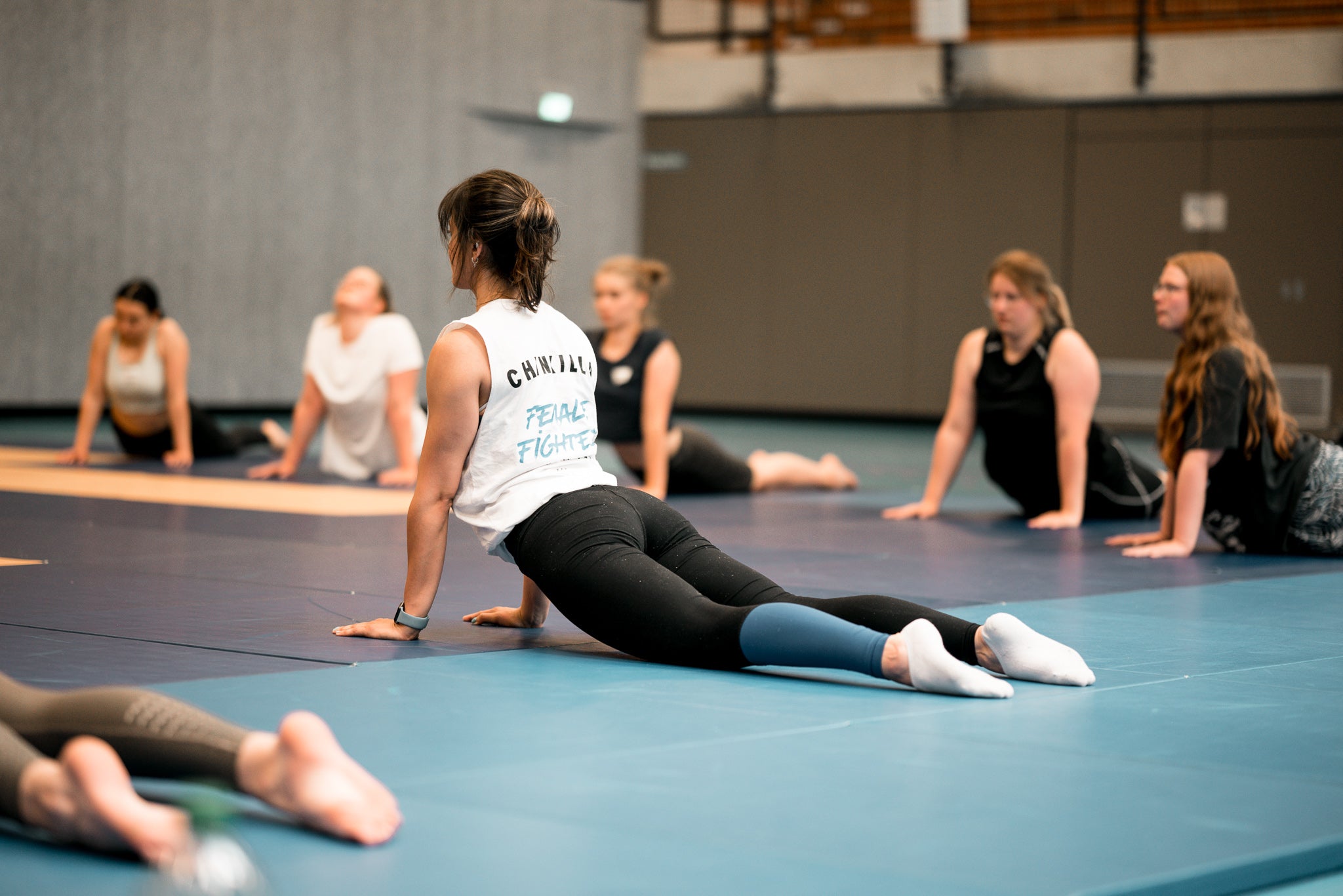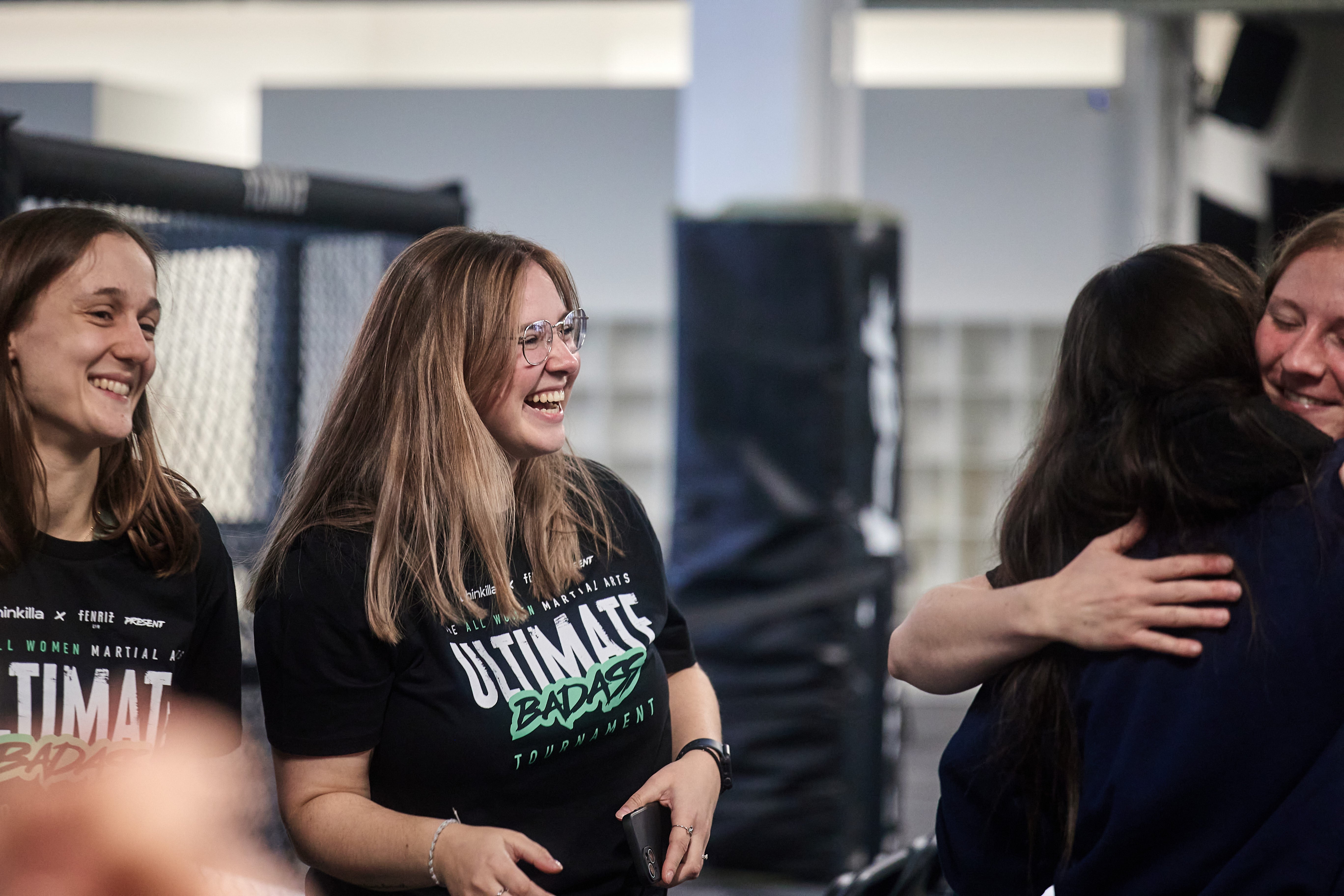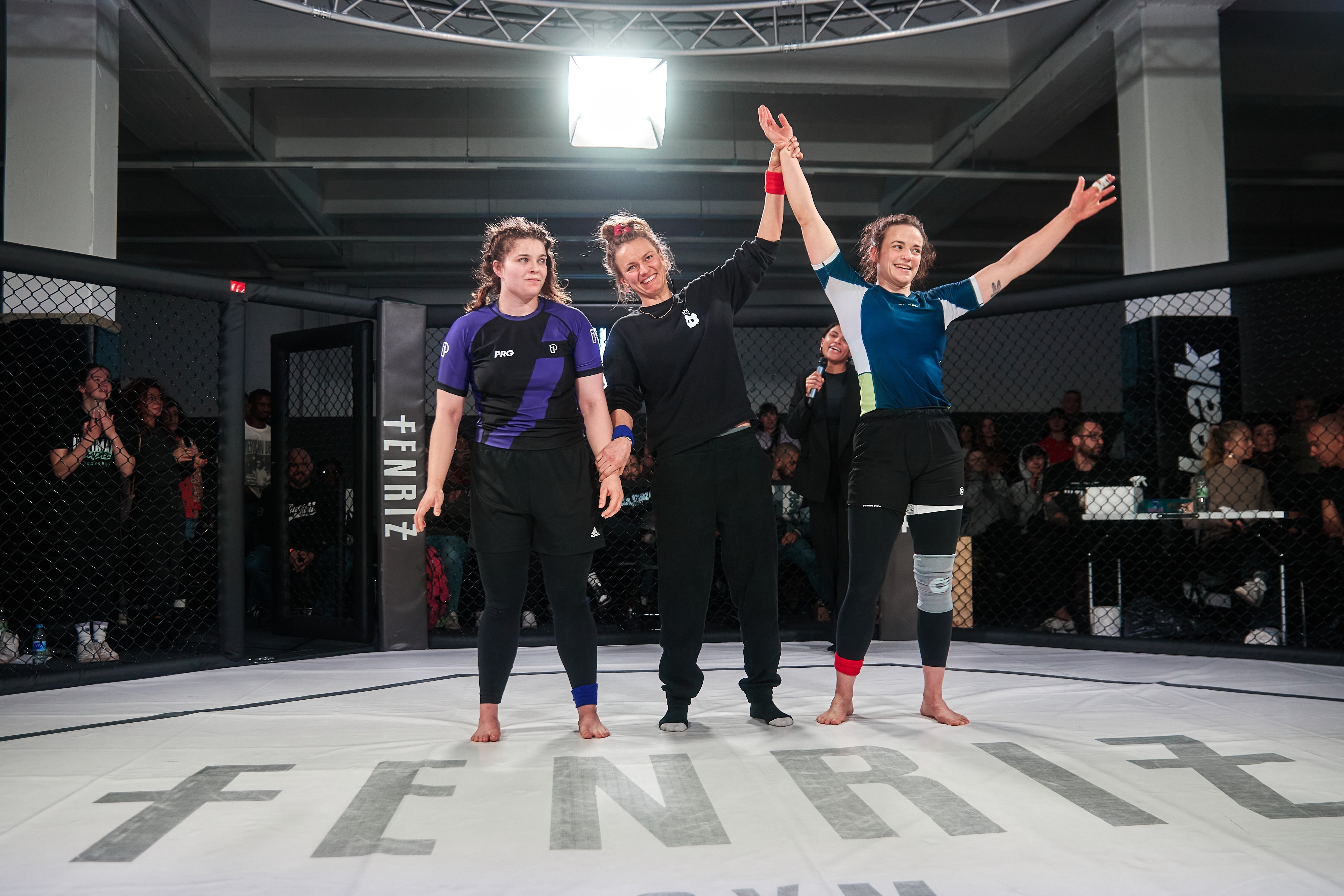My first yoga class was a hot mess. I lagged behind everyone else in the sun salutations. My wrists were killing me after the first two downward-facing dogs. I fell over in every balance pose. In short, my physical performance of the asanas (poses) sucked.
And so I quit. As someone who was often deemed quite athletic and “good at things” from the start, this direct blow to my ego was unbearable in my early 20s. I walked away from the mat and said “not my thing” with my nose in the air like the pompous little twat I was.
How did I end up becoming a yoga teacher so many years later?

Two things led to my change in perspective:
- The physical relief I felt after yoga class from the horrible chronic pain in my neck, shoulders, and upper back from sitting at a laptop 10+ hours a day.
- The immediate mental transformation I felt after synchronizing deep breathing with movement.
I had approached my first attempt as a workout and a competition instead of a chance for controlled movement and introspection. A couple years were enough to mature that mindset though, and to increase the (literal) pain in my neck that sent me back for a second chance. And that much more successful attempt translated into a regular practice and 250 hours of yoga teacher training.
I've gained so much benefit from yoga that I literally cannot shut up about it to my teammates and training partners in the martial arts world. I include a bit of it at the end of nearly every training session I coach, and at all our chinkilla events. I nagged about opening a yoga class at my local MMA club until it finally happened.

Some fun FAQs I've heard since starting the weekly class:
"Is that a girl thing?" (No. Women used to be banned from yoga back in the day.)
"Does it actually help you kick higher?" (Only with hard work and dedication.)
"Should I do it if I'm not flexible?" (Classic question. Eye-roll response.)
"Why bother?"
That last one has led me to write up this little article here, and share with you a few very good reasons why you should bother with yoga as a martial artist. I'm talking boxing, Muay Thai, BJJ, mixed martial arts - any fighter can take their mind and body to another level by establishing a regular yoga practice. Here are 7 reasons you should include yoga alongside your martial arts training.
1. Flexibility
I'm just going to get this out of the way. Yes, it's the first thing everyone thinks of when they hear “yoga!” A class dedicated to bending, twisting, arching, and inverting your body goes farther than randomized stretches once in a blue moon. No, being flexible is not a prerequisite to joining yoga. Very few people walk in the first day already able to hold all the poses perfectly. And where would the fun be in the journey? Make yoga a regular habit and the results will show.
2. Breathing
An essential (and sadly underrated) part to any athletic performance is your breathing. For proper pacing, decision-making under stress, and recovery between rounds: huffing and puffing through your mouth is not optimal. Many yoga practices encourage you to maintain nasal-diaphragm breathing for the entire duration of the class. And you can take this directly into your training. I can't count the number of times I've been astounded by the levels of mouth breathing on the mats. Do yoga; don't be a mouth-breather. #namaste
3. Balance
Holding various yoga poses ->
leads to better awareness of your body parts in space (“kinesthetic intelligence”) ->
leads to improved balance and movement.
If you're wobbly on your feet, this is for you. Stand-up martial arts can especially benefit from balance training. General stability is important for both young and old, but balance poses can also be very useful for older athletes and fall prevention.
4. Strength
Thinking that yoga class is equal to naptime is a common misconception. Although it’s generally light-intensity (you haven’t been to my class yet), there is a lot of bodyweight strength involved - core, legs, shoulders - you name it. For all the gainz, aim to hold a pose for 5 deep breaths rather than hopping quickly from one Asana to the next. Having to keep yourself in a position for a longer time builds strength, as opposed to the use of pure momentum to get you in and out of a posture. For example, a slow descent from the plank position to the ground (Chatturanga Dandasana) is basically an eccentric push-up, building upper-body strength.
5. Focus
Controlling your breath throughout the entire practice, and focusing your gaze on a single fixed point (Drishti) are two key ways that yoga turns your senses inward to a highly-focused state of mind. Your ability to maintain concentration for an extended period of time is known as Dharana, which is one step before entering meditation. It should be easy to imagine how this mental fortitude would be a valuable skill to have during sparring rounds, padwork training, and even conditioning. All will require that you overcome both mental and physical hurdles.
6. Body Awareness
Get to know your own (very individual) anatomy. Physically, you’ll soon find out where your muscular imbalances are, and what anatomical advantages and disadvantages you have. Some things like hamstring flexibility can be improved, but other aspects like hip rotation often need to be adapted to. No two bodies are the same, just as no two fighters are the same. You’re not expected to imitate the yoga teacher exactly; you’re expected to find the version of the pose that fits your body. For example, a 6-foot-tall BJJ athlete doesn't normally have the same gameplan as a 5-foot BJJ athlete. Learn about your anatomy and take it into your training.
7. Self Reflection: where the real growth happens.
Blessed are those with the ability to look at themselves objectively - and yoga is a great tool for developing this. Sitting with yourself at the end of practice in a relaxed state, breath regulated, Parasympathetic Nervous System (PNS) activated: your mind is an empty sheet, primed for soft focus and calm contemplation on your thoughts and emotions. There is so much ego in martial arts. (If you're unaware of this, you may be part of the problem.) Introspection is a key element in yoga that can help to tame that wild ego. Avoid the temptation to skip the Pranayama (breathing practice) or Savasana at the end of class. Contrary to popular belief, the moments of stillness can bring you as much of the long-term benefits all the stretchy, flashy poses can, and then some.
In short - yoga is like a hidden secret that some people have unlocked, and others have dismissed before they've even tried. Like your new favorite song, it can take a few tries before it catches on. Give yoga a chance!





Share:
That's How We Roll – sichere Atmosphäre & geteilte Leidenschaft